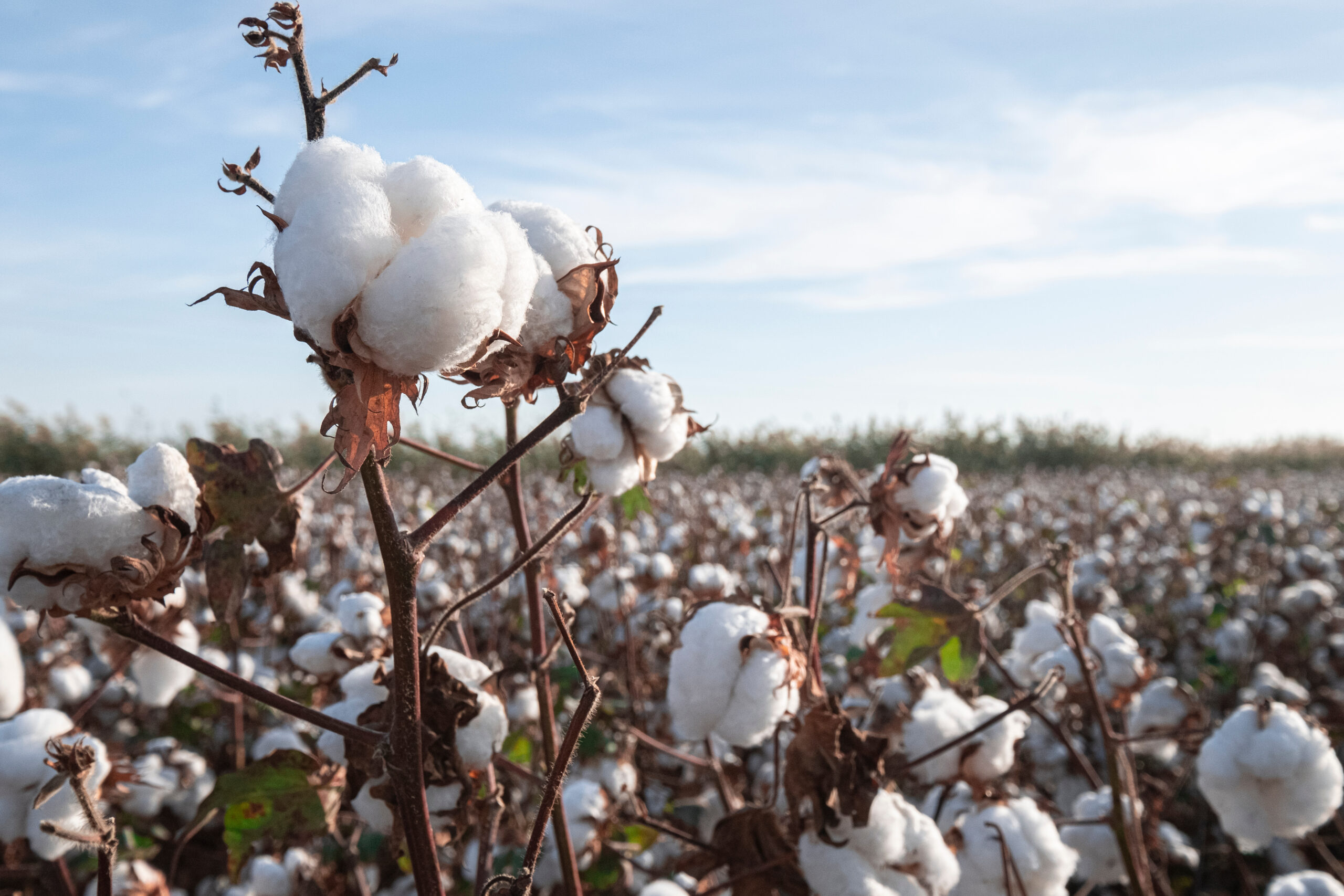COTTON
The steep selloff in cotton since it put in a contract high in February has left the market with little or no weather premium right ahead of the growing season. The US crop is starting off with strong expectations, with the planting pace ahead of last year and the 10-year average and US soil moisture conditions much better than the past two years. For Friday’s USDA supply demand report, a Bloomberg survey shows an average trade expectation for US 2024/25 cotton production at 15.73 million bales, with a range of 13.50-17.50 million. This would be up from 12.10 million in 2023/24 and would be in the middle of a 10-year range of 12.1-19.9 million. Exports are expected to come in around 13.14 million bales versus 12.30 million in 2023/24. Ending stocks are expected at 3.49 million (range 2.70-4.25) versus 2.50 million in 2023/24 and 4.25 million in 2022/23. World production is expected to be around 116.74 million bales and consumption at 115.86 million. Ending stocks are expected to come in at 83.49 million, which would be up from 83.08 in 2023/24 and the highest since 2019/20. Traders could react negatively to today’s weekly export sales report if shipments do not show an improvement over last week.

COCOA
July cocoa is approaching a 50% retracement of the steep selloff from all-time highs in April. Recent rains have eased the worst fears for the west African mid-crop, but dry conditions persist. There have been reports of early-harvested beans being smaller than normal. For the late-harvest beans to have a consistently normal size, the region will need to see decent, regular rainfall over the next few weeks. They are expected to see daily rainfall through late next week. West Africa is at the start of the rainy season, which runs from April to mid-November. Global supplies are expected to remain tight through the 2023/24 marketing year, but demand worries are cropping up, despite better-than-expected grind numbers for the first quarter.
COFFEE
July coffee traded up to the 50-day moving average overnight, and that level could be a key resistance area today. Fund long liquidation appears to have eased. Dry conditions in Vietnam persist, despite recent rains, and this could inspire a recovery in robusta prices (and arabica as well). Rain in Dak Lak, Vietnam, which represents one-third of the nation’s harvest, typically averages around 200 millimeters in May. So far this month they have only received about 20-30 millimeters. Brazilian arabica growing regions continue to see drier than normal conditions, which could negatively impact their harvest later this season. Colombia’s April coffee production came in at 742,000 bags, which was 31% above year-ago. Their 12-month total from May 2023 to April 2024 was 11.617 million bags. ICE exchange arabica stocks fell 13,750 bags yesterday after reaching a one-year high on Tuesday. There are more than 119,000 bags pending review. The stock build suggests supplies are ample.
SUGAR
July sugar broke out of a three-week consolidation this week but backed off yesterday after Brazilian consultancy Datagro forecast a 2024/25 global production surplus of 1.62 million tonnes. They attributed this in part to a 20% increase in Thailand’s production. The shift from El Nino to La Nina this summer could lead to increased rainfall that would help improve Thailand’s cane crop. Brazil’s new crop harvest has gotten off to a strong start, but dry weather earlier this year could result in lower yields as the season moves forward. An official from India said that their government is not ready to decide whether to resume sugar exports this season and that it may take several more months to do so. The official added that the government is unlikely to allow further exports until it has guarantees that there will be enough to satisfy local demand plus 2 1/2 months’ worth of supplies.
Interested in more futures markets? Explore our Market Dashboards here.
Futures and options trading involve significant risk of loss and may not be suitable for everyone. Therefore, carefully consider whether such trading is suitable for you in light of your financial condition. The information and comments contained herein is provided by ADMIS and in no way should be construed to be information provided by ADM. The author of this report did not have a financial interest in any of the contracts discussed in this report at the time the report was prepared. The information provided is designed to assist in your analysis and evaluation of the futures and options markets. However, any decisions you may make to buy, sell or hold a futures or options position on such research are entirely your own and not in any way deemed to be endorsed by or attributed to ADMIS. Copyright ADM Investor Services, Inc.
